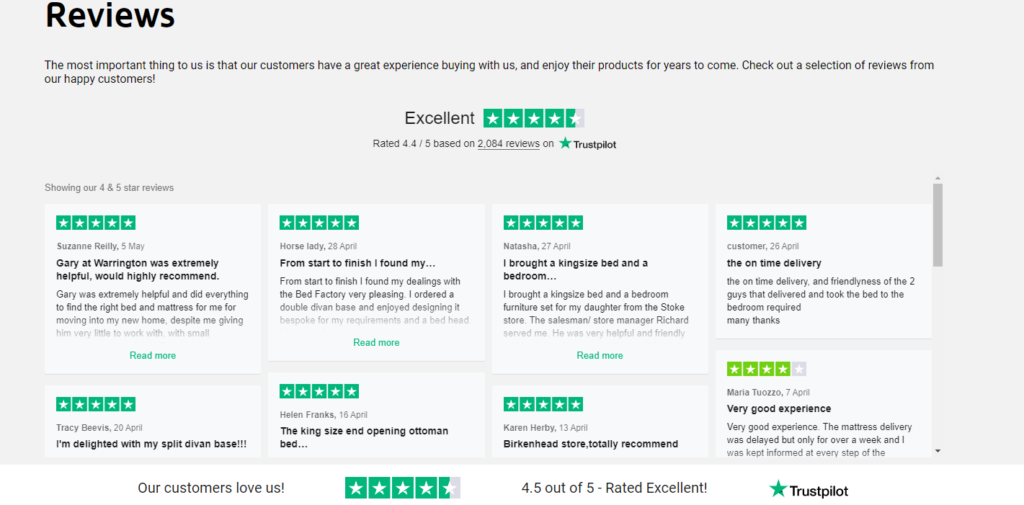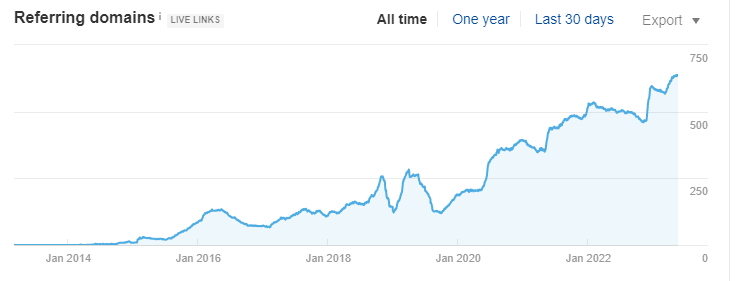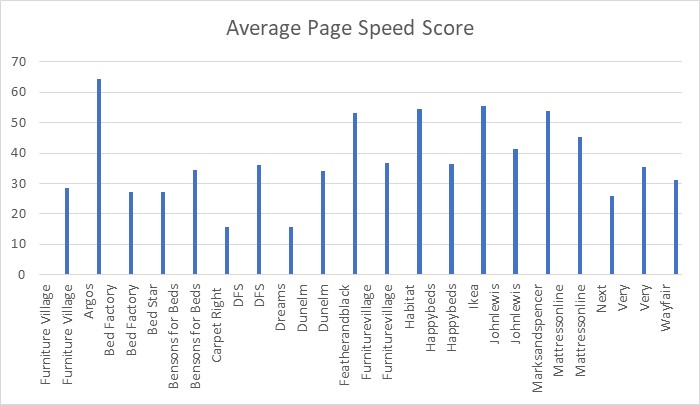Each year, we review the biggest industries online and create sector reports showing the winners and losers. To do this we monitor eleven key metrics to determine the overall success of the website. One of the key metrics we review is visibility, which is a metric measuring how visible a website is in search.
One of the industries we report on is the bed and mattress industry. See our bed and mattress sector report for the low down. One of the big winners from this report is The Bed Factory Direct which recorded a 46% increase year-on-year which results in an average position increase of 7 places.
The bed and mattress industry is one that we keep a keen eye on, and we have seen The Bed Factory jump up the search engine results pages over the last year. In this article we have outlined some of the things that they have done in order to jump up the SERPs.
Displaying Trust Throughout The Site
Displaying trust on a website has always been important, but Google focused on it even more in 2018 when they released a core algorithm update, which was named by SEO’s the “medic update” as it focused on medical websites. Within this Google mentioned EAT, standing for Expertise Authority, and trustworthiness more often which came from official documentation prior to the release of the 2018 update. Since 2018 Google have put a lot of emphasis on this and have expanded EAT to EEAT, or Experience, Expertise, Authority, and Trustworthiness. So, trust is pretty important in search and The Bed Factory do a few things that really helps to build trust with their users.
The Bed Factory has really strong reviews, which are of course a great way to display trust to users. Those reviews are sign posted really well throughout the site.

Many competitor sites further up the search results also have strong review scores, however, not all sites sign post them well. For example; Wayfair, Ikea, Next, Argos all rank strongly for the keyword “beds”, but do not display reviews. However, for a smaller brand looking to make waves, reviews and trust are key both for search engines and users.
A great way to display trust on a website is to use a USP bar. This is a content block that sits on every page of the website and gives the users several reasons to buy from their website. This is what The Bed Factories looks like:

As you can see they display their reviews well in there, which is something not all competitors do – Dunelm are an example of this – a website that rank strongly in Google for the term “beds”.
Many of The Bed Factories competitors have a USP bar on their website, however, the USPs in here focus on price– which feels more important than ever to consumers.
Increased Number of Links
The Bed Factory have build a considerable number of links recently.

This looks like it is part of their recent success as they have built some high quality links to key pages. The graph below shows the domain rating increasing in recent years.
When looking at this closer it is clear that the site has built some strong links, including a Wikipedia link which is the holy grail of links. They also have some good links form news sources, like the evening standard a site they have been cited in several times.
Page Speed
We did a small test reviewing three pages from each website within the top twenty positions of Google – for the keyword “beds”. We looked at the homepage, a product page, and a category page for each site. In this test we found that The Bed Factory aren’t one of the top performers.

There has been a lot of talk about page speed recently after Google retired the page speed ranking system. This led to many people saying page speed isn’t important, this is still something that is important to users. Google search liaisons have often said in recent years that this is a tie breaker rather than a way to get to the top of the SERPs. Perhaps if the Bed Factory were to improve their page speed, they would see even bigger increases, considering how close they have got to competitor sites at the top of the market.
Promoting budget friendly buys for maximum engagement
While we don’t have access to their analytics to prove the theory here, it’s interesting to note that a key Bed Factory Direct USP is price. They target the lower end of the market with clear signposting around price everywhere from the body of their home page to a USP bar which is present across every page. The first three call-outs in that USP bar are cost-related.

And by re-emphasising this with language such as “from £89” across the site no doubt helps keep users engaged, promoting them to navigate through to commercial pages. With greater engagement come greater rankings – search engines analyse how quickly a user returns back to their platform after clicking a result and reward sites where bounce rates are low.
To further this theory, we took a look at some of the top ranking sites for “beds” and identified how they’ve changed their pricing strategy this year to last. To get a view of how users initially react, we compared the average price of the first 12 beds available on the most prominent beds page of each site.
Interestingly, despite the rise in inflation and increased business costs, nearly all brands had a lower average price than they did the year previous. This suggests that they’ve reordered the beds they present to target the lower end of the market, rather than reducing the cost of their frames.
| Brand | 21-22 Average Price | 22-23 Average Price | % change |
| Argos | 255 | 227 | -10.98% |
| Dunelm | 330 | 319 | -3.64% |
| Bensons For Beds* | 1029 | 912 | -10.59% |
| Furniture Village* | 1647 | 1237 | -24.89% |
*These brands most often sell beds with mattresses which is why their pricing is so much higher than the others.
It seems clear that brands in this space have responded to the cost of living crisis by ensuring users aren’t put off by the initial prices potential consumers engage with. The Bed Factory Direct work in a similar vein, ensuring price isn’t a blocker which could make users disengage.
To emulate this strategy, we’d suggest looking to calling out competitive pricing by:
- Ordering products on PLPS low-to high or calling out cheap frames through “best for budget” styled product bars
- Embracing budget-friendliness through the language used in CTAs on key traffic pages
- Signposting finance options and low-cost products through USP bars
If you’d like tailored advice for your brand and how you can achieve maximum growth over the next 12 months, get in touch for a free strategy audit now.
